
It may not have raged across the airwaves, nor penetrated much of the sporting landscape in an era when sport itself, in Thatcher’s Britain, was on something of a downer. But as a divided country waged war with itself and others, and English football clubs were deemed too dangerous to play abroad, and the England cricket team lurched from class to farce and back again, the counties of Middlesex and Essex were jovially locked (with a scrunch of the hair and a punch on the arm come September), in a quietly titanic two-way scrap to be called the best team in England.
Back in the day, everyone knew what they were getting with Essex. It was the kind of fixture that county lifers circled on the calendar. They’d wait for it to come round, load up their Morris Minors and head down to Southend, Colchester, Ilford, Chelmsford – wherever this nomadic cash-poor county had pitched its marquee that week – for a good old rumble and a victory beer at the end of it. It was a reputation hard earned.
1979 was the year. First came the B&H Cup and Essex’s inaugural piece of silverware. “That Lord’s final would be high on the list for me,” says Gooch. “Not particularly because I scored a hundred in a match that we won, but much more importantly than that, it was the first ever trophy that Essex had won in their history. They’d been bridesmaids quite a bit and so to get over the line meant a lot for any Essex supporter.”
There would still be room for a couple more. By the early Nineties, Graham Gooch was imperious. The England captain and the best opening batsman in the world, his sheer presence was enough to secure titles in 1991 and 1992. He may, by then, have been the central pole around which all the assorted lumber of English cricket would be draped, yet there he’d be at Chelmsford, loping down the pavilion steps in his white lid, weighing that clump of Surridge in his hands the morning after repelling the fastest, ugliest and cruellest men in world cricket. “Playing for Essex meant as much for Gooch as playing for England,” Pringle says. “He dedicated equal space in his mind and body to both.”
Under the guidance of Keith Fletcher, Essex rose from lovable pushovers to strutting county titans in the Eighties. Their self-made story chimed perfectly with the times, writes Phil Walker.
The ‘London club’, led back then by the debonair Mike Brearley and boasting some seriously upmarket digs, had assumed the winning of silverware before, most recently a couple of times (one shared) in the Seventies. Essex on the other hand had won nothing. Ever. They shared southernness, a convoluted physical proximity to London and a crest on their sweaters that may as well have been exactly the same, but not much thereafter. If Lord’s was a ‘hallowed place’, then the Chelmsford County Ground was determinedly secular.
[breakout id=”0″][/breakout]
And yet at the time they were both utterly dominant. In the 14 seasons from 1979 to 1993, four teams won the County Championship. Notts in 1981, and Worcestershire in 1988 and 1989. The other 11 were claimed by either Middlesex or Essex.
It was a tight-run thing but Essex just shaded it, their run of six titles in 13 years from ‘79 to ‘92 amounting to a period of concentrated post-war success to rank behind only Surrey’s seven-on-the-bounce in the Fifties and Yorkshire’s seven-in-10 riposte a decade later. Both of those teams are immortals. Books are written, plaques erected, stands named in honour of the major players. Essex wouldn’t win the County Championship again until 2017, having spent most of the 21st Century languishing in the second tier. So how did it happen, that a small town club muscled in on the big boys so successfully and for so long?
[caption id=”attachment_143138″ align=”alignnone” width=”800″]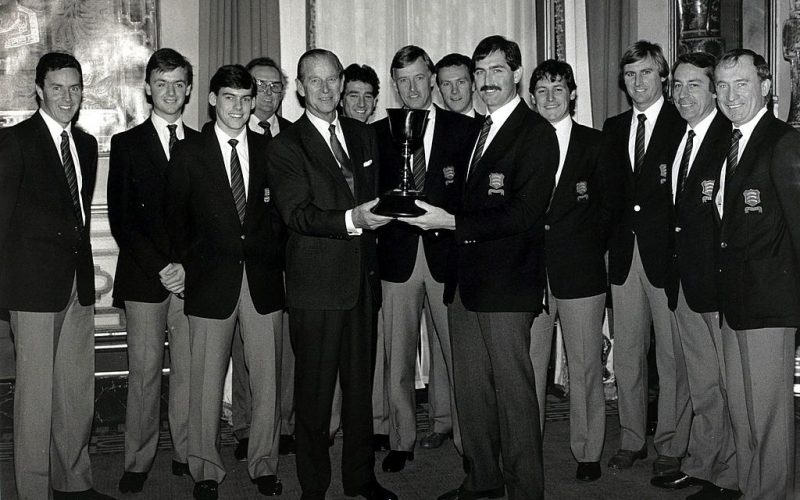 HRH Prince Philip presents the 1986 County Cricket Championship trophy to Graham Gooch and his team at the Buckingham Palace[/caption]
HRH Prince Philip presents the 1986 County Cricket Championship trophy to Graham Gooch and his team at the Buckingham Palace[/caption]
The cricket club had never been rich or successful. With its sprawling catchment area running from the edge of the Anglian coast to the north-eastern corner of London, for much of the first half of its existence the county played wherever it could, making ends meet with fixtures here and there.
[breakout id=”5″][/breakout]
It wasn’t until 1966 that Essex, with financial help from the Warwickshire Supporters’ Association, were able to purchase the ground at Chelmsford and turn it into home. It was a watershed moment. After a period in which its very existence had come under threat, Essex had been able to overcome a record loss of £9,000 in 1966 – which had necessitated cutting the playing staff to just 13. And the man behind the turnaround? A bandy-legged major general from West Ham who went by the name of Tonker.
Brian Taylor’s mix of relentless optimism and tactical ingenuity – allied to tidy work with the turtle doves across 572 matches – was exactly what Essex needed at the time. As the Seventies rolled round and with the books broadly balancing, Essex got stuck in to this still nascent curio known as limited-overs cricket, excelling in the field to finish third, fourth and second in the John Player League either side of the decade’s turn.
[breakout id=”4″][/breakout]
“We run and field like mad,” Tonker told the Wisden Almanack after becoming one of their Five Cricketers of the Year in 1972. “We are absolutely honest with each other, and we do our best to try and help a teammate going through a bad patch. One of the reasons why a good spirit exists comes from all pulling in the right direction. We came through the club’s bad times together, and the loyalty remains in the better times.”
The better times were just around the corner. “We’d had a number of good cricketers that were finding their way in the late sixties,” recalls a Leytonstone boy called Graham Gooch, an aspiring middle-order batsman and occasional wicket-keeper who would join the fray in 1973. “And then in that Brian Taylor era, a lot of players started to mature, people like John Lever, Ray East, David Acfield, Stuart Turner. They were becoming experienced cricketers.”
[caption id=”attachment_143141″ align=”alignnone” width=”800″]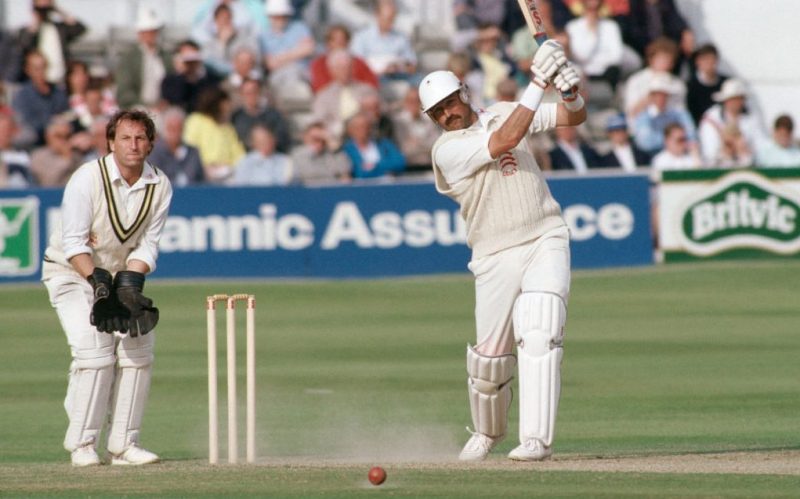 Gooch in action during his unbeaten 117 in the Benson and Hedges Cup 1998 quarterfinal against Warwickshire[/caption]
Gooch in action during his unbeaten 117 in the Benson and Hedges Cup 1998 quarterfinal against Warwickshire[/caption]
One of those colts, Raymond Eric East, from the sleepy Essex village of Manningtree, was a left-arm spinner of outstanding potency. But certain county cricketers are remembered more for their characters than their feats and in East’s case his popularity may have overshadowed his substantial qualities on the park.
“I think he laughed every day of his life,” says Gooch, of the man who would take over 1,000 wickets across 19 seasons. “He would have represented England were it not for Derek Underwood. He was a laugh a minute, always playing pranks on the field. You wouldn’t see it nowadays – one of the downsides of the academy systems that bring cricketers through is it would be hard for a Ray East to get through them.”
[breakout id=”3″][/breakout]
Derek Pringle, who’d sloped over to Essex from Cambridge University in the late Seventies, recalls East’s warmth, his gift for mimicry – “He’d regale us with these wonderful stories, although in classic comedian style there was a morose side as well” – and qualities as a match-winner. Pringle recalls one particularly illustrative story from the era: “There was a time [the 1967 season] when they needed a certain number of points to not be bottom of the Championship. They’d got most of the points on the first day against Kent and so they went over to France on the ferry, in the middle of the match, and there was some problem coming back. And Tonker was looking over breakfast thinking, ‘Where are they?’ They had to borrow a few twelfth men for that one…”
East’s fingerprints were all over that one. But while he embraced and in some ways typified the absurdist nature of the travelling cricketer’s life, give him a pitch and he could seriously play, and the same applied to most of that Essex side, says Gooch. “We had a reputation of being a fun side, having a few laughs off the field, being a bit jokey, but we tried to be a bit more serious on the field.”
[caption id=”attachment_143142″ align=”alignnone” width=”800″]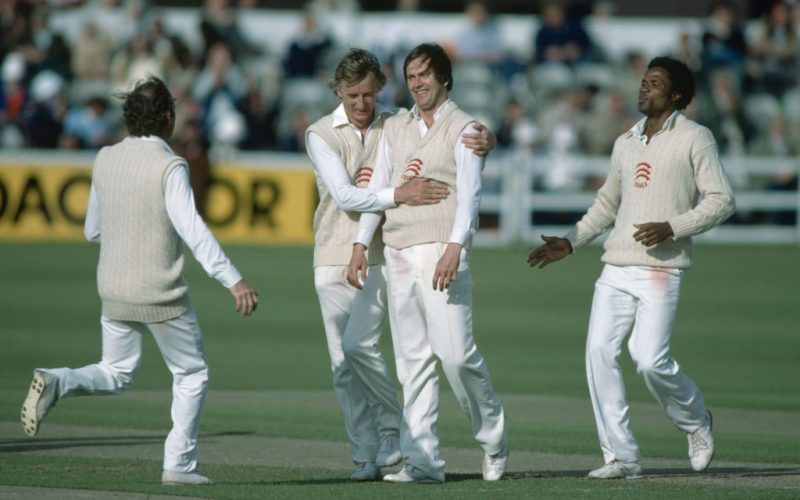 Ray East helped Essex become a dominant force in the Eighties[/caption]
Ray East helped Essex become a dominant force in the Eighties[/caption]
Eventually, says Gooch (who by the mid-Seventies had begun to make a few runs of his own), it all came together. In the age of three-day matches, finding ways to manufacture positive results took a particularly creative brand of tactical smarts, and in Keith Fletcher Essex had found the perfect, dishevelled, hangdog alchemist to oversee the county’s first proper assault on the big time.
Fletcher was known as The Gnome, so the story goes, because his winkle-pickers curled up at the toe. Middlesex had the psychologist; Essex the Gnome. Culturally, you could drive several beamers between them. Tactically, there was little to split the two. “No doubt, Keith and Brearley were the captains of their day,” says Gooch. “Keith was great at engineering victories with his declarations. We liked to be an enterprising team, and you had to give the opposition in three-day games a chance of winning.”
[breakout id=”7″][/breakout]
Even great skippers need a decent bowling attack, however, and Fletcher had one. John Lever – JK to all – was a Stepney boy, Seventies haircut, good footballer. He was also, according to Pringle, something of a genius with a cricket ball. “And not just a genius, an unflagging genius. He bowled millions of overs.” Lever was the attack leader, and the most potent fast bowler around at the time, and with support from the young quick Neil Foster, the West Indian Norbert Phillip, Stuart Turner and Pringle himself, allied to the spin twins East and Acfield, Fletcher had the weapons to be creative.
“I used to travel with Keith quite a bit to away games,” Pringle recalls, “and he used to say, ‘What have we got? Who have we got? Where have we got them? OK, we’ll need 10 wins to win the Championship, 11 to be safe. Gooch will win us three with the bat, JK will win us four with the ball, the spinners will win us a couple, and everyone else can muck in and get us the other one!’”
[caption id=”attachment_143145″ align=”alignnone” width=”800″]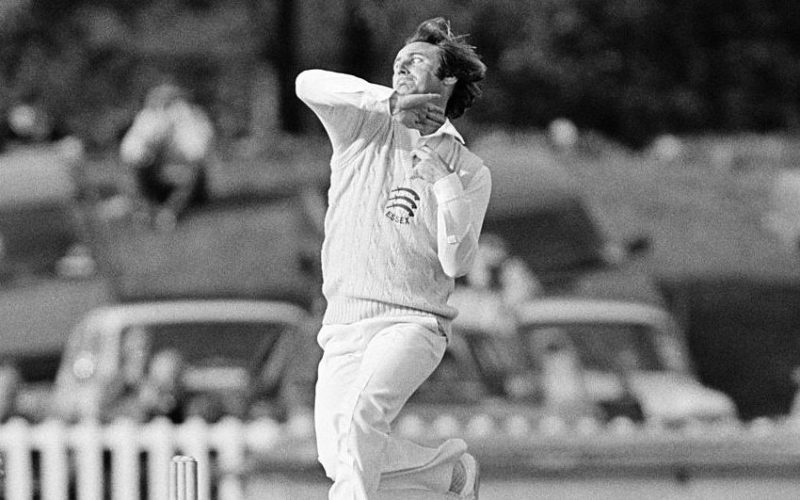 JK Lever: “An unflagging genius” for Essex in the Eighties, says Derek Pringle[/caption]
JK Lever: “An unflagging genius” for Essex in the Eighties, says Derek Pringle[/caption]
Floodgates flung open, the first Championship followed soon after. Essex stormed it, winning by 77 points from second-placed Worcestershire. Gooch was with England by this point, so runs were plundered from elsewhere, notably the South African import Kenny McEwen, who would share run-making duties with Gooch for much of the next decade.
[breakout id=”8″][/breakout]
The next followed in 1983. Essex managed the same number of wins and incurred more losses than Middlesex, but bonus points saw them clinch the title by just 16 points, with McEwen again the star, hitting over 2,000 runs for the year. This was also the year when Essex bowled out Surrey for 14. Gooch was playing in that one: “Norbert Phillip 6-4. Neil Foster 4-10. Surrey were 8-8 and we thought we’d get them out for less than 10. They got Sylvester Clarke out of the bar, he didn’t believe they were 4-6 or whatever they were, but they got him out to bat and he managed to slog a four over the slips and that got them up to 14…”
It kept on coming. The key match from the triumphant ’84 season, says Pringle, came at Ilford against Warwickshire, which Essex won after following on. “Alvin Kallicharran was in a rich vein of form and got runs in the first innings but in the second we rolled them for about 110. The pitch was playing pretty well, it was one of those things where we got a few early wickets and Fletcher squeezed the nuts and turned the screws and made them make mistakes.”
By 1986, Allan Border was the overseas star in situ, and his 1,287 runs helped Essex to a fourth Championship in seven years. By then the team was changing.
[caption id=”attachment_143146″ align=”alignnone” width=”800″]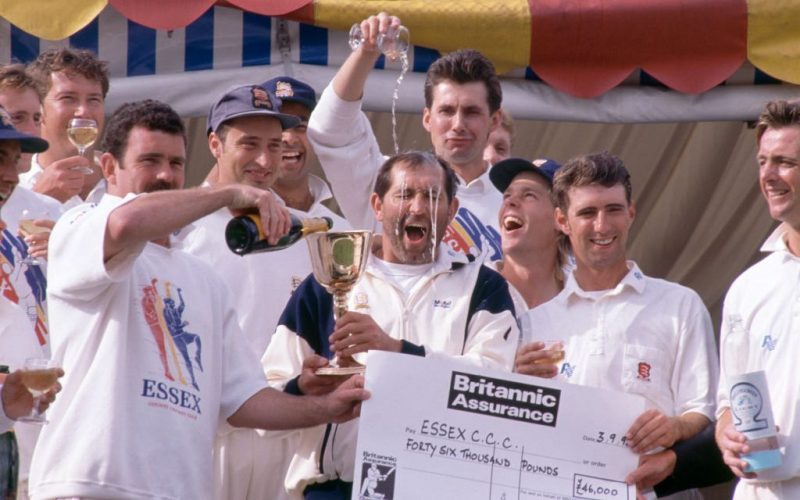 Essex team celebrates winning the County Championship 1992 after beating Hampshire in the final[/caption]
Essex team celebrates winning the County Championship 1992 after beating Hampshire in the final[/caption]
Fletcher handed over the reins to Gooch. New stars were emerging. Nasser Hussain recalls coming through in the late Eighties. “They were real, good characters. Defined me as a person. Because any issues they had, they’d just get them out in the open. If you changed between Foster, Pringle, and Don Topley, as I did, every hour there would be an argument about everything to do with life on and off the cricket field. But the next day, they would turn up and get on with it.
“Old-school cricket, but very, very good cricketers. People ask me, ‘Do you wish you played in the present era?’ I’m pleased that I tasted both eras of cricket. The old school? There was nothing wrong with the old school. Yeah, they played hard on and off the field. They enjoyed themselves. They worked hard. They were bloody successful. They were a good set of lads who stuck up for each other. And there were some seriously good cricketers in there. The standards back then were phenomenal.”
[breakout id=”6″][/breakout]
It couldn’t last. It never does. Make Nasser captain, Pringle had said to the committee, as he prepared to bow out (an ageing Gooch would soon follow), “and they told me I needed my head looking at. People thought Nasser was a bit of a brat, but I thought, ‘Give him some authority and responsibility and you’ll see a different bloke.’ I could see the passion that was driving through.”
[breakout id=”1″][/breakout]
But they didn’t give Nasser the captaincy. Essex’s loss would be England’s gain. For the first time, perhaps, in their garbled and fleetingly glorious history, Essex played it safe. And safe never really did suit them.
First published in November 2016







